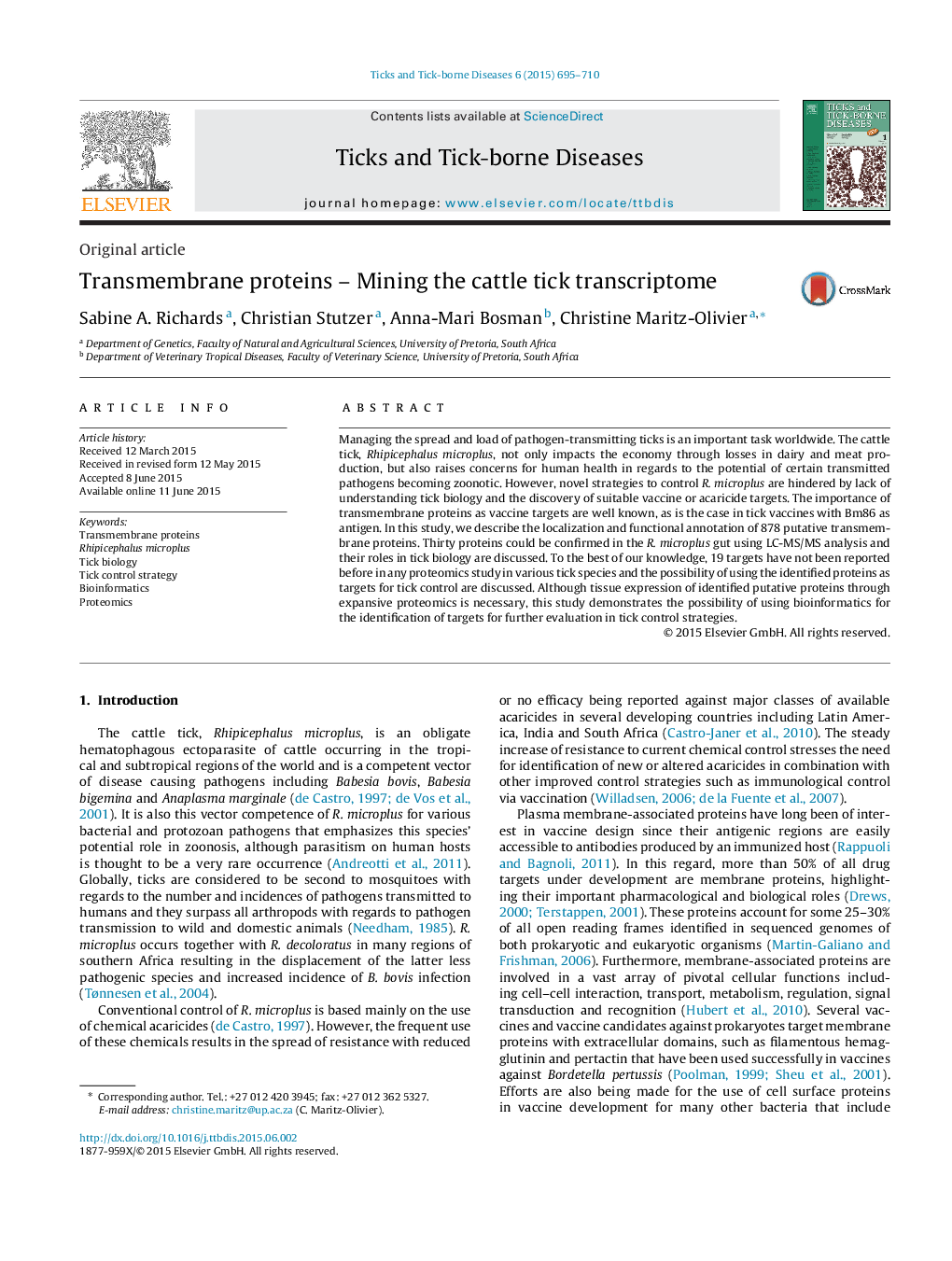| Article ID | Journal | Published Year | Pages | File Type |
|---|---|---|---|---|
| 5807185 | Ticks and Tick-borne Diseases | 2015 | 16 Pages |
Managing the spread and load of pathogen-transmitting ticks is an important task worldwide. The cattle tick, Rhipicephalus microplus, not only impacts the economy through losses in dairy and meat production, but also raises concerns for human health in regards to the potential of certain transmitted pathogens becoming zoonotic. However, novel strategies to control R. microplus are hindered by lack of understanding tick biology and the discovery of suitable vaccine or acaricide targets. The importance of transmembrane proteins as vaccine targets are well known, as is the case in tick vaccines with Bm86 as antigen. In this study, we describe the localization and functional annotation of 878 putative transmembrane proteins. Thirty proteins could be confirmed in the R. microplus gut using LC-MS/MS analysis and their roles in tick biology are discussed. To the best of our knowledge, 19 targets have not been reported before in any proteomics study in various tick species and the possibility of using the identified proteins as targets for tick control are discussed. Although tissue expression of identified putative proteins through expansive proteomics is necessary, this study demonstrates the possibility of using bioinformatics for the identification of targets for further evaluation in tick control strategies.
